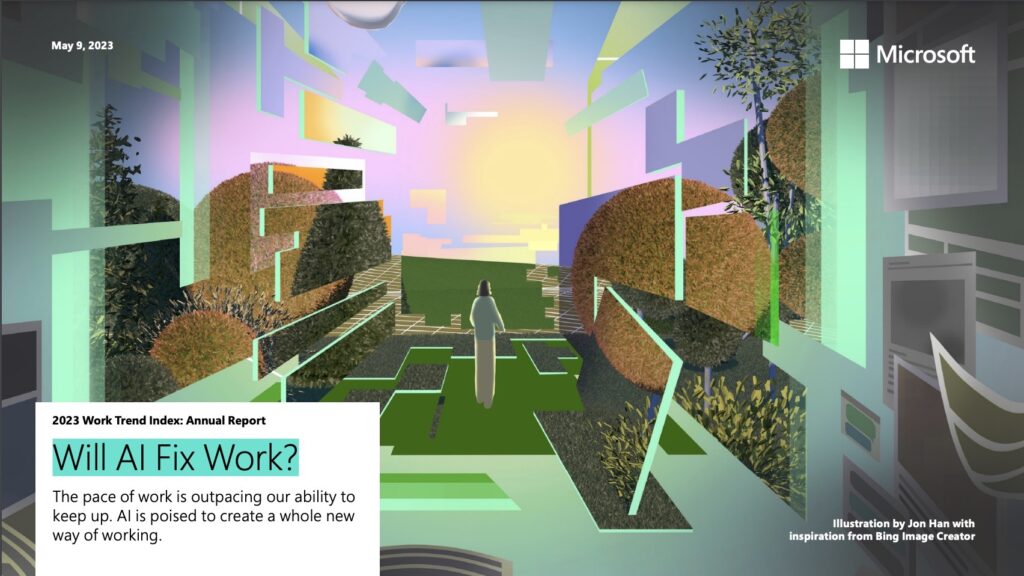The Microsoft 2023 Work Trend Index has been released, sharing research and data on the trends reshaping the world of work today.
In this article, we break down the key findings from the 29-page report, to keep you in the loop and save you time
Table of Contents
Digital debt is costing us innovation
Digital debt comes from the overwhelming amount of information and digital tasks we have to manage.
It slows us down, affects productivity, and prevents us from focusing on creative and strategic work. Every minute spent managing digital debt takes us further away from the creative work that fuels innovation.
Resolving digital debt means finding ways to streamline workflows and prioritise tasks to regain control and boost productivity.
This diagram (taken from the report) shows collaboration patterns in Microsoft 365 in a rolling 28-day period ending in March 2023 excluding weekends.
It shows the time spent in Microsoft 365 apps: Outlook, Teams, Word, PowerPoint, Excel, and OneNote, and it’s measured based on intentional activities. Things like attending meetings, writing emails, analysing data, reviewing or editing documents, etc.
How to stop digital debt from holding us back?
- Identify and tackle productivity disruptors. Listen to your employees and understand what hinders productivity.
- Use AI to completely rethink the workday. Our tools have changed, it’s time to utilise them to work for a new working world.
- View meetings as more than just isolated events. Embrace AI-powered tools to simplify your approach to meetings and maximise collaboration.
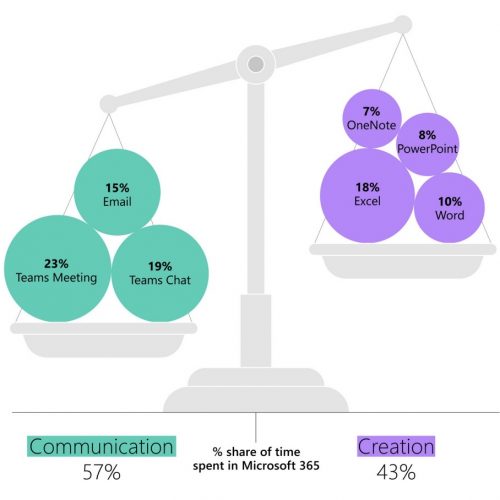
There’s a new AI-employee alliance
AI anxiety – a term coined to express how (according to some reports) there is a widespread fear that AI is going to replace us in the workplace.
But that anxiety may not be as universally felt as headlines suggest…

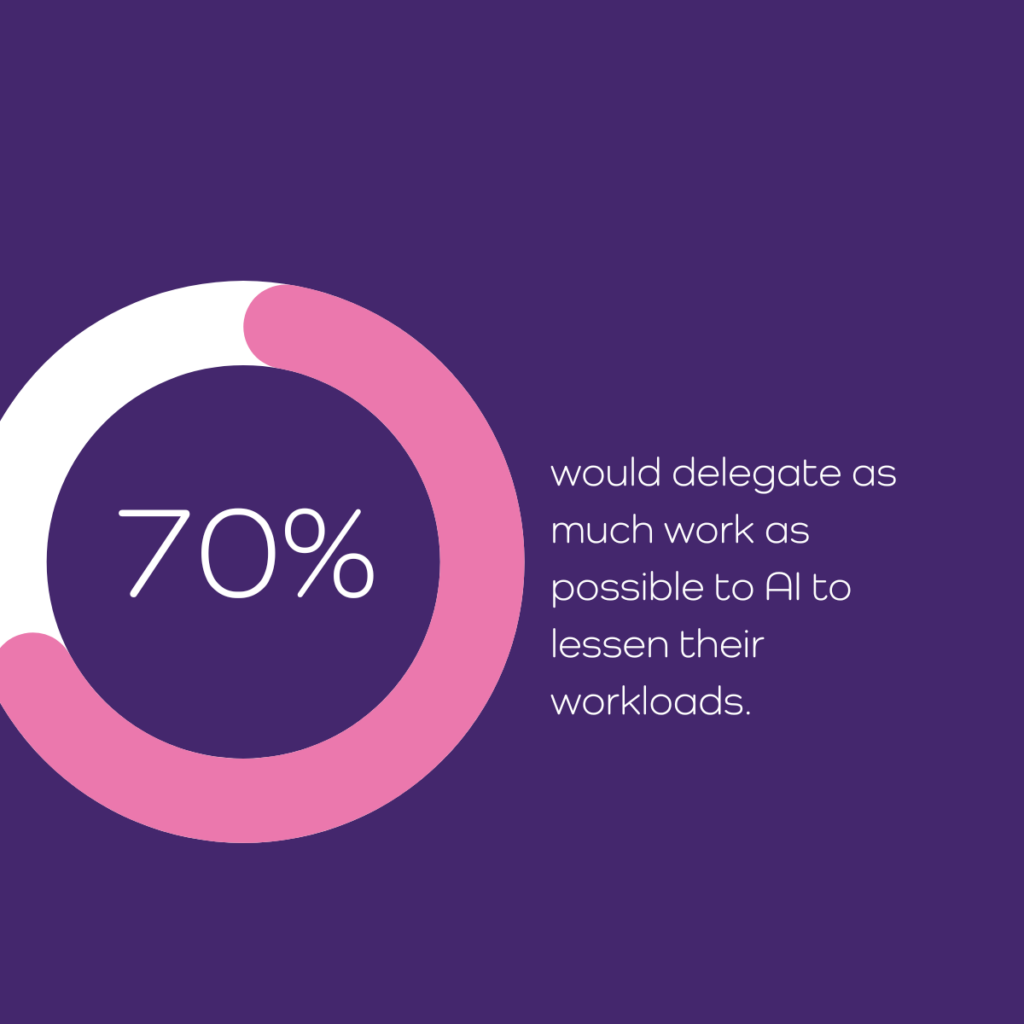
When asked, business leaders said they’re more interested in AI increasing employee productivity than they are in using it to reduce headcount.
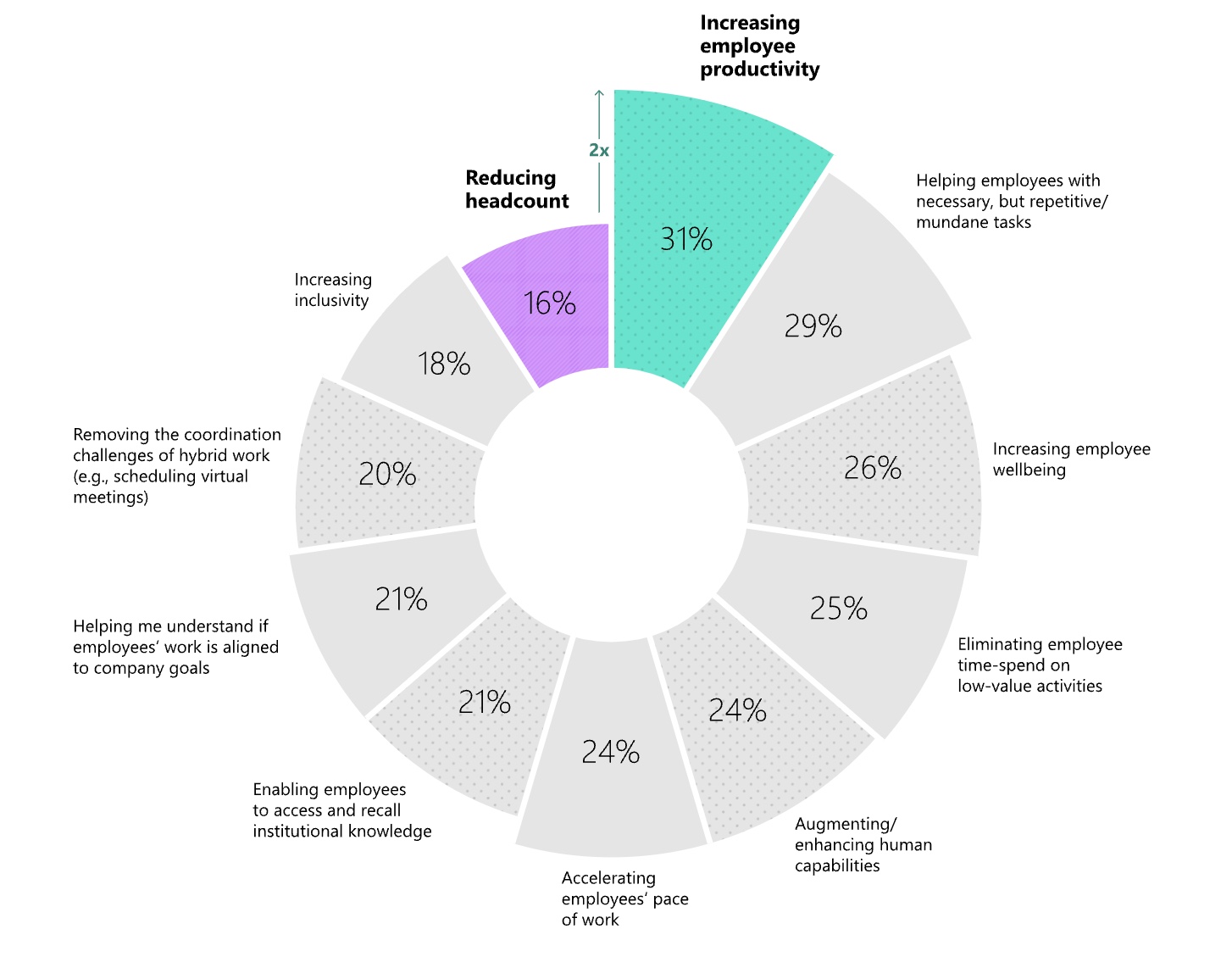
What do employees want AI to do for them?
In the Microsoft 2023 Work Trend Index, those surveyed say they’d most value changes that saved them time—like producing high-quality work and learning new skills faster. Below is a full breakdown of respondents’ answers in what they want from AI.
Every employee needs AI aptitude
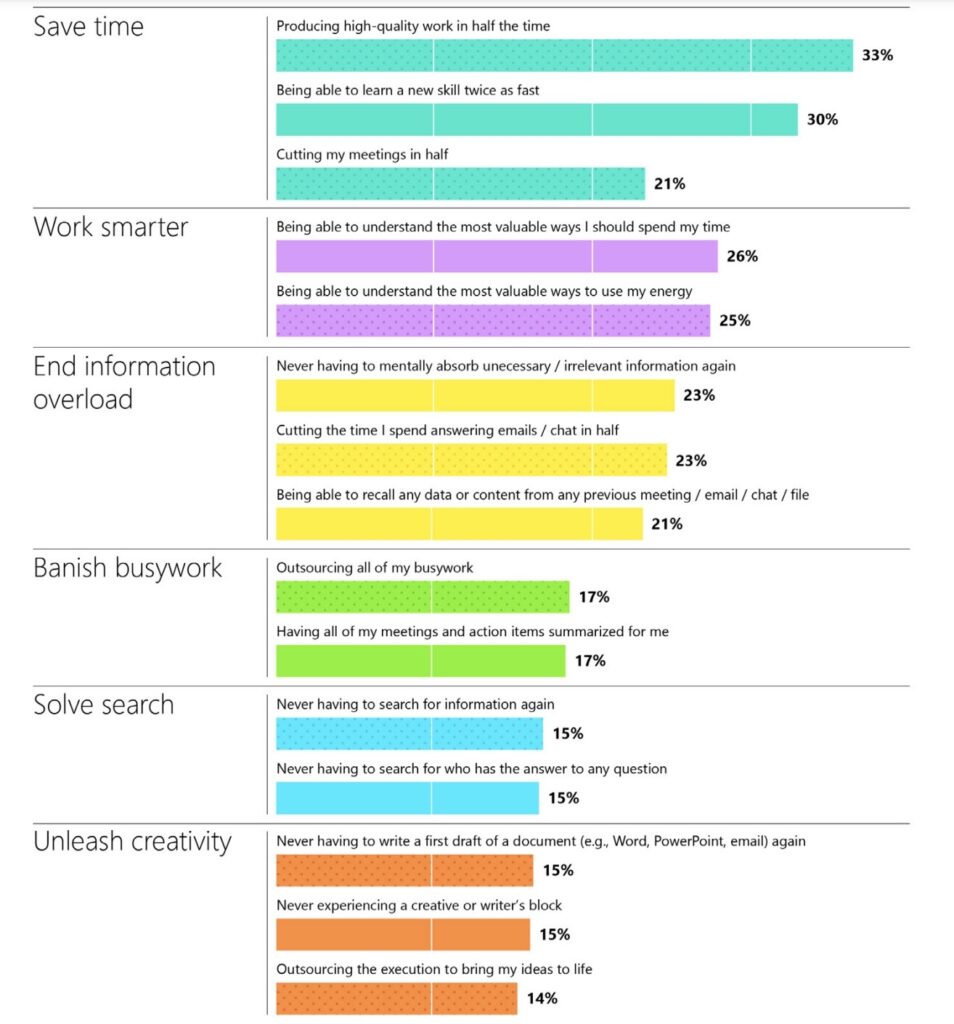
AI is going to reshape our working world.
Potentially, in the same way that the PC did not all that long ago.
Collaborating with AI will transform work patterns. Every employee will need to master the skill of working with AI. Listing ‘AI aptitude’ as part of job vacancies is probably not far off.
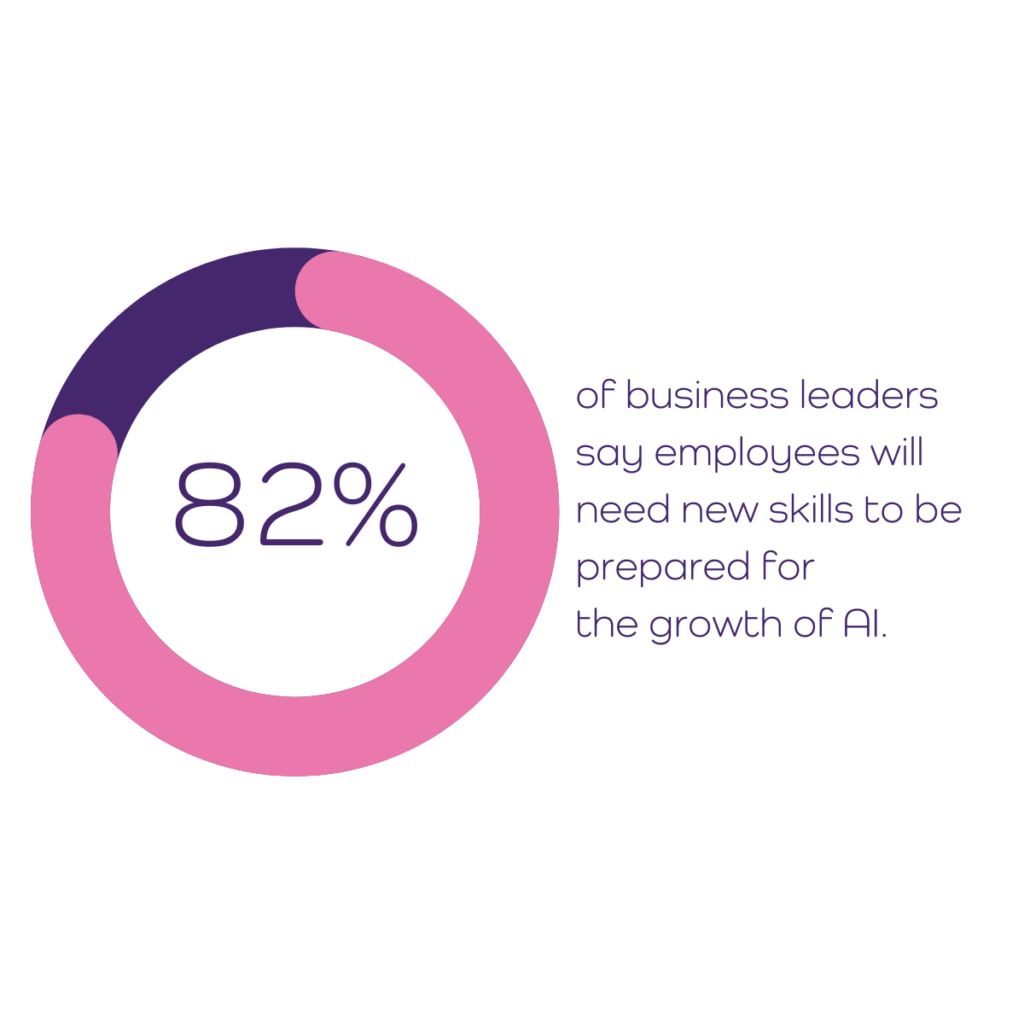
How can leaders help employees grow their AI skills?
AI in the workplace is not about every employee learning how to code.
It’s about teaching every employee how to use AI technology to improve their role. Whether that be to become more efficient, to generate more ideas, or to develop their learning faster.
- Stay informed: Keep up with the latest developments in AI technology and how it can be applied to different industries.
- Seek training opportunities: Look for training programs or workshops that focus on AI applications relevant to your role.
- Experiment and explore: Experiment with AI tools and platforms relevant to your work. Start small by identifying tasks or processes that can be automated or optimised with AI.
- Embrace continuous learning: Adopt a mindset of continuous learning. Stay curious and be open to new ideas and approaches.
- Collaborate with AI experts: Collaborating with AI experts can help you understand the possibilities and limitations of AI and how it can be effectively integrated into your role.
